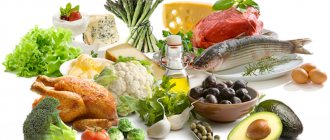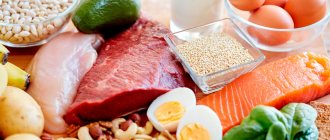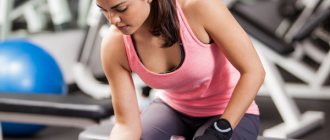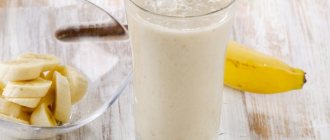Working as a fitness trainer, I heard the wish “I would like to lose weight and gain some muscle here and there” from almost every beginner. (There were even people who wanted to “pump fat into muscle,” which, as I will explain below, really cannot be done). Meanwhile, bodybuilders and fitness athletes often claim that this is impossible.
In fact, both are right. It is possible to lose weight and gain muscle mass at the same time - but only for one category of trainees. This is confirmed not only by my 15 years of coaching experience, but also by the statistics of my fellow coaches and sports physiology data.
What's the contradiction?
To lose weight, as you know, the intake of calories into the body should be lower than the expenditure. Schematically speaking, we begin to exercise - we increase calorie consumption. We eat less simple carbohydrates and fats - we reduce intake. In response, the body is forced to take energy - not only for training, but also for everyday life! - from long-lasting reserves, that is, from adipose tissue.
What is the plan for muscle growth? They are formed from proteins. Physical activity (mainly strength) triggers a rather complex chain of biochemical reactions: exercise causes microdamage in the muscles, and in response, hormones and growth factors are produced that literally “repair” damaged cells and stimulate the synthesis of new ones. Now pay attention: new cells are synthesized from protein - which means that a person’s diet after training should contain more protein than usual. And the second point: protein synthesis requires a lot of energy, therefore, the diet should contain a lot of carbohydrates. (I think you now understand why it is physiologically impossible to “pump fat into muscles”? There are no proteins or carbohydrates in fat reserves! Nothing can be “extracted” from them except energy.)
The ideal balance of proteins and carbohydrates is represented by high-carbohydrate protein mixtures (aka gainers), which add 500-800 kcal to your norm. The second option is to make it from low-fat cottage cheese and chicken breasts with rice. The situation is still stalemate. To lose weight you need a deficit of energy, to gain muscle mass you need an excess of it.
Basic principles for fat burning and cutting
- Consume fewer calories than you expend
- Reducing caloric intake should occur gradually
- Reduce your intake of carbohydrates and animal fats and increase the amount of protein in your diet
- Replace foods with fast carbohydrates with foods with slow ones
- Drink more, at least 2.5 liters per day
- Eat more often, but in small portions
- Add cardio to your workouts
- Increase the intensity of your strength training by reducing the rest time between exercises and sets
Losing weight and gaining muscle mass: how is this paradox resolved?
The classic sports scheme involves 2 stages. First, against the backdrop of high-intensity training with heavy weights and high-calorie nutrition, we gain both muscle and fat. Then we reduce the working weights and add aerobic exercise, change the diet - and “get dry”, that is, we burn off excess fat and water, preserving muscles.
Using this scheme, you can gain a fairly large amount of muscle tissue - 5-10 kg per year. A person’s clothing size may increase, and body proportions may change. In particular, trousers tailored for ordinary people are always loose in the waist and buttocks, but are difficult to stretch over pumped-up hips, and jackets are narrow in the shoulders and back, but too wide in the abdomen. Such athletes, especially bodybuilders, build muscle mass much more than the physiological norm! This process in sports physiology is called muscle hypertrophy.
But the fact is that most people who come to the gym, especially women, don’t come for it at all! What they call “pumping up” actually does not mean muscle hypertrophy and radical restructuring of the body, but tone and restoration of muscle tissue deficiency.
[new-page]
Men's program for fat burning and muscle definition
Amateur level
Day 1
Muscle groups trained: Chest, Biceps
- Warm up 5 minutes
- Bench press
- Incline Dumbbell Press 30*
- Wide grip dips
- Standing biceps curl
- Lifting dumbbells alternately for biceps while standing
Day 2
Muscle groups trained: Back, Triceps
- Warm up 5 minutes
- Pull-ups on the horizontal bar with a wide grip to the chest
- Belt barbell row
- Sitting vertical block row to the chest
- Horizontal block pull to the belt
- French bench press with barbell
- standing arm extension (triceps)
Day 3
Muscle groups trained: Shoulders, Legs
- Warm up 5 minutes
- Seated dumbbell press
- Warm up 5 minutes
- Standing dumbbell lateral raises
- Standing barbell row to the chin (medium grip)
- Barbell Squats / Platform Leg Press / Smith Machine Squats
- Seated leg extensions
- Sitting/standing calf raises in the machine
Exercises are performed in 4 sets of 12 to 15 repetitions. Rest between sets is no more than 1 minute, between exercises no more than 2 minutes. The total training duration is no more than 60 minutes. The press is done as needed. 3 strength training sessions per week for a period of 3 to 6 months. Training weights are moderate and are selected individually for each approach. Cardio (Elliptical, Treadmill, Bike Trainer, Step Trainer) workouts from 20 to 40 minutes after the main program, also for well-being and recovery. Cardio training can be added on days off from strength training for 40-60 minutes.
Who can lose weight and gain muscle mass at the same time?
Someone who has muscle mass below the physiological norm. According to research, it should be about 30% of body weight in women and about 40% in men. The body reaches this proportion naturally after puberty at the age of 21-25. But after this age, if you do not support the muscles with training, they gradually decompose. On average, by 1-2% per year, but if a person leads a sedentary lifestyle and does not eat enough protein, then even faster. As a result, people come to the fitness club whose muscle mass at 30 years old is only 18-20% (I personally saw this in testing), but they have too much fat.
When such people begin to move more to lose weight, their muscles tend to restore their natural normal. Accordingly, if a slightly increased amount of protein enters the body (1-2 g per 1 kg of weight), they will grow! You can use protein shakes that contain minimal carbohydrates (about 100 kcal per serving). In this situation, the body takes energy for the synthesis of muscle cells from fat reserves, because with the help of training and diet the body is already configured to consume it. Supplements that facilitate the conversion of fat into energy and muscle recovery (L-carnitine, synephrine, B vitamins, inosine, chromium picolinate, etc.) can help here.
Body recomposition: build muscle and lose fat
Not only professional athletes, but also people leading an active lifestyle want to have more muscle and less fat. The process of building muscle and losing fat is called body recomposition.
It is generally accepted that it is mainly untrained beginners and overweight people who can lose fat and build muscle at the same time. This idea seems logical because muscles grow most actively at a young age and at the beginning of weight training, until they have adapted to the load. However, many studies show that people who train with weights for a long time successfully rebuild their bodies. American researchers, led by University of Tampa Associate Professor Eduardo de Souza, studied the literature on this issue.
It is generally accepted that successful body recomposition is facilitated by a combination of resistance training and aerobic exercise. This is the kind of program that coaches recommend to their students. At the same time, they select the most effective training parameters for maximum muscle hypertrophy: exercises, their intensity and volume.
Body composition is also affected by diet. The combination of a protein diet (more than 2 g/kg/day) and resistance training promotes both muscle building and fat loss.
Athletes for whom appearance is important (bodybuilders) diligently lose fat and build muscle in between competitions, but do not achieve much effect. Perhaps the problem is that athletes restrict caloric intake and increase energy expenditure during this time, which negatively affects many parameters important for recomposition, such as sleep, hormones and metabolism. Therefore, hard training in this mode makes restructuring difficult.
Different ways to assess body composition
Comparing literature data is difficult because different researchers use different methods for determining body composition.
Typically, body composition is divided into bone mass, lean mass (muscle, connective tissue, internal organs), and fat mass. The measurement result is influenced by the content of extracellular and intracellular water and the degree of satiety. It is difficult to accurately determine the mass of skeletal muscle due to its composition: about 75% water, 15 - 25% protein, 2 - 3% glycogen and 5% intramuscular triglycerides.
The gold standard for assessing body composition is the 4-component model (4C), which divides the body into fat mass, water, bone minerals, and everything else. It also allows you to calculate the protein content. However, this model involves laboratory tests, including MRI and CT scans, and is therefore expensive and time consuming.
Recently, the 4C model is being replaced by a combination of two others: dual-energy X-ray absorptiometry (DEXA) and bioelectrical impedance (electrical resistance of biological tissues). DEXA is a three-component model that separates the body into bone minerals, lean mass, and fat mass. The model allows you to determine the composition of different areas of the body (torso, arms or legs), but does not distinguish between muscle groups, such as quadriceps and hamstrings or biceps and triceps. However, the model determines changes in lean and fat mass quite accurately. When determining fat mass, DEXA and MRI show very similar results.
There is also a two-part model that distinguishes between fat mass and lean mass. Tests include air displacement plethysmography (BodPod), fold caliper, bioelectrical impedance, underwater weighing, and ultrasound. BodPod is a device that measures the volume of air displaced by a person based on the volume of air in the chest. Body composition is determined by the relationship between volume and pressure. The method has high test-retest reliability but appears to significantly overestimate lean mass and underestimate fat mass.
Finally, A-mode ultrasound scans measure the thickness of muscle and subcutaneous fat. This method is used to calculate total lean mass, fat mass, and fat percentage. The result obtained in this way is similar to the result of DEXA.
Each method has potential limitations, and subtle changes in body composition detected by these methods may be due to changes in hydration or satiety. However, when used correctly and strictly standardized, they provide fairly reliable results.
Recomposition and training status
The results of recomposition are influenced by the length of training. Beginners tend to gain muscle mass faster than experienced athletes. Thus, amateurs who worked out in a health group increased their fat-free mass by 5 kg and decreased their fat mass by 1.4 kg over 10 weeks. At the same time, highly trained athletes gained 1.9 kg of lean mass over 8 weeks, and their fat amount did not change significantly. At the same time, many professional athletes who give themselves some slack between competitions quickly regain their body composition when they resume their training regimen. Thus, elite rugby players, returning to training after a 4-week break, gained 1.8 kg of lean mass and lost 2.2 kg of fat over 11 weeks of high-intensity, high-volume training.
Most researchers study bodybuilders' body recomposition during preparation for competitions and do not notice significant changes. Perhaps this is due to the strict requirements placed on athletes during the training period: they do not get enough sleep, are limited in energy consumption, but spend a lot of it, and have little fat in their bodies. However, female athletes sometimes manage to change their body composition during the preparation period. This phenomenon is partly explained by differences in hormonal profiles. In men, for example, during the period of preparation and a strict diet, testosterone levels are reduced.
So the data obtained from the study of bodybuilders is difficult to compare with the results obtained from other groups of people.
Recomposition Training
Some researchers report that experienced athletes were able to achieve body recomposition without changing their usual diet, solely through physical exercise. For example, athletes who were able to produce twice their body weight during an isometric squat performed either high-load circuit training or standard strength training for 8 weeks. Both groups worked under the supervision of a trainer, performed 6 exercises (3 compound and 3 isolation exercises) for 3 to 6 approaches with a load of 6 maximum repetitions to failure. The high-intensity training group performed circuit exercises with 35-second breaks in between. During standard strength training, athletes rested 3 minutes between each set of each exercise. Only the high-intensity training group managed to significantly reduce the percentage of fat; athletes lost about 1.5% of fat, and athletes from the other group only lost 1.1% (the result is unreliable). However, lean mass increased significantly in both groups (1.5 and 1.2 kg, respectively).
In another study, amateurs with 3 years of resistance training experience trained either low volume, high frequency (4 times per week) or high volume, low frequency (2 times per week) for six weeks. Participants were asked not to change their usual diet. The total volume of training for the week was the same for the athletes; the volume of one training session varied. The groups increased lean mass by 1.2 and 1.4 kg, respectively, but fat mass decreased significantly only in the high-volume, low-frequency athletes—a loss of 2.4 kg.
The frequency of training also affects body recomposition. Powerlifters training 3 or 6 times per week increased lean mass by 1.7 kg and 2.6 kg, respectively, but the loss of fat mass in both groups was not statistically significant.
These studies show that body recomposition is possible with a variety of resistance training programs that target strength and muscle size, even without nutritional adjustments.
Combining exercise with diet
Resistance training results, recovery, and body composition are influenced by combining exercise with a tailored diet. Typically, people trying to lose fat limit their calorie intake. Those who want to gain maximum muscle mass need a calorie surplus. This is a common practice, but there are other ways to improve your body composition. For example, an increase in muscle mass and a decrease in fat mass was observed with a reduced caloric intake. The need for hypercaloric nutrition during resistance training to maximize skeletal muscle hypertrophy is also questionable. The mechanisms of body recomposition are not fully understood, and the energy expenditure for skeletal muscle growth is not precisely known. In addition, it is unknown what the relative contribution of external and internal energy sources, that is, nutrition and body fat stores, is to this process. The matter, of course, does not come down solely to energy balance, because different diets can contribute to body recomposition: both high-protein and low-calorie.
One study compared the effects of a high-protein (3.4 g/kg) and a regular (2.3 g/kg) diet on the body composition of well-trained men and women performing resistance exercise. Participants trained 5 days a week for eight weeks (top/bottom split), and both groups gained one and a half kilograms of lean mass. Interestingly, athletes who ate an additional 495 calories per day on a high-protein diet lost 1.6 kg of fat, while those in the other group only lost 0.3 kg. The researchers highlight that there was a lot of individual variability across the groups, with some even losing muscle mass and gaining fat, but about 70% of participants on the high-protein diet improved their body composition.
Another study examined the effect of protein on body remodeling in more detail. Well-trained men worked out three times a week. The training volume for each exercise increased from 10 sets in the first week to 32 sets in the sixth week. After training, they received a supplement of maltodextrin (30 g), whey protein (25 g), or graded whey protein. Participants in this group added 25 g of whey protein to their diet every week and went from 25 to 150 g in 6 weeks. In addition, all athletes took nutritional supplements that amounted to 500 additional calories per day. Participants in all groups gained muscle mass over six weeks: 2.35 kg, 1.22 kg and 2.93 kg, respectively. But only the athletes in the two groups receiving whey protein were able to lose fat (approximately 0.65 and 1 kg). Although the athletes received different amounts of whey protein, the total amount of protein consumed during the day was almost the same (2.3 and 2.2 g/kg), and athletes receiving maltodextrin ate 2.3 g/kg protein per day . These results suggest that specific timing of nutrient intake, such as post-workout, is superior to total daily intake. This issue requires further study.
Similar results were obtained in a study involving aspiring female bodybuilders whose diet was increased by 250 kilocalories of protein. They trained four times a week (up/down split) and on training days received either little (0.9 g/kg) or high protein (2.5 g/kg) extra protein. The high-protein group gained 2.1 kg of lean mass and lost 1.1 kg of fat, despite an additional 423 kcal daily. However, the low-protein group also received a small but significant increase in lean mass (0.6 kg). Their fat loss is statistically insignificant. So even with moderate protein consumption and a balanced diet, you can get good results.
Another study reports body recomposition in female collegiate volleyball players. They completed seven weeks of weight training to strengthen their entire body and lower body. After each workout, they received 25 grams of whey protein, and their daily protein intake was also the same (1.g/kg). Throughout the study, the caloric content of their diet did not change. One group trained at an optimal load, in which participants worked at a speed that maximized power output. The second group performed progressive speed training, starting with low, strength-focused speeds and then moving to maximal-impact training. The optimal exercise group increased lean body mass by 2.7 kg and lost 2.7 kg of fat, while the progressive training group gained 2.7 kg of lean body mass and lost 2.1 kg of fat.
The results of volleyball players differ from the above results of female bodybuilders; they lost more fat. The fact is that volleyball players initially had more fat (29 and 22%, respectively), which could have influenced a greater reduction in fat mass and an increase in lean mass. In addition, the volleyball players received recommendations from a nutritionist. Finally, this study was conducted in the off-season, after a break in training.
All of this work shows how body recomposition occurs with moderate to high protein intake coupled with progressive resistance training in different groups of athletes. Moreover, having more fat mass may influence the magnitude of this remodeling, as these stores provide internal energy for muscle gain.
Factors unrelated to training and nutrition that affect body composition
Researchers studying diet and exercise pay little attention to factors such as sleep quality and quantity, levels of stress hormones (cortisol) and androgen hormones (testosterone), and metabolic rate. Meanwhile, they can affect body composition.
Recently, American experts studied the effect of lack of sleep on body weight. Two groups of obese subjects were on a low-calorie diet for 5 weeks, while one of the groups reduced their sleep time by an hour. Members of both groups lost about 3.2 kg, but in the sleep-deprived group, almost 85% of the weight lost was lean mass rather than fat. Participants who got enough sleep lost mostly fat. The sleep-deprived group had a noticeable increase in levels of ghrelin, also called the hunger hormone. It significantly increases the likelihood of fat gain, and for this reason many people are unable to maintain a stable weight.
Sleep restriction is bad for athletic performance. Sleep-deprived subjects experienced significant reductions in strength, endurance, and total volumetric load in exercises such as the bench press, deadlift, and leg press. The same exercises with lack of sleep seemed more difficult to them than in their normal state. This is an important aspect because training volume is very important for muscle growth.
Lack of sleep is also associated with increased levels of cortisol, glucose and insulin and decreased testosterone, adiponectin and growth hormone. This biochemical environment is not conducive to muscle building and fat loss. Thus, bodybuilders in preparation for competitions, despite high-protein diets and diligent weight training, lost lean mass because they did not get enough sleep. Sleep restriction slowed muscle protein synthesis, which negatively impacted body composition. However, even with limited sleep, a sufficient rate of muscle protein synthesis can be maintained by performing high-intensity exercise.
While lack of sleep harms body composition, getting enough sleep improves it. Twenty-three untrained participants completed a routine full-body exercise routine for ten weeks and then had their body composition determined by DEXA. Subjects who only exercised increased their lean mass by 1.3 kg. The group that got good sleep in addition to training not only gained 1.7 kg of muscle, but also lost 1.8 kg of fat. How sleep optimization will affect experienced athletes remains to be seen.
Conclusion
So, not only beginners and overweight people, but also trained people can effectively build muscle while losing fat. The result is influenced by the initial training of people, their physique and the exercises performed. Weight training combined with diet gives good results. In addition, you need to take into account the quantity and quality of sleep, hormonal levels and metabolism, which affect changes in body composition. It’s up to coaches and athletes to take all these factors into account and develop an individual strategy for body recomposition.
Here are the practical conclusions that can be drawn from these studies:
- Do progressive resistance training at least three times a week.
- Monitor rate of change, performance and recovery to adjust your training over time.
- Consumption of 2.6–3.5 g of protein per kilogram of lean mass may increase the likelihood or magnitude of recomposition.
- To increase your daily protein intake and maximize muscle protein synthesis, you can use protein supplements such as whey or casein. These supplements are useful to take after training to enhance the body recomposition effect.
- Performance, recovery and recomposition of the body are beneficially affected by long, high-quality sleep.
Where is the proof?
Many people are familiar with the effect of the first months in a fitness club: clothes fit looser, waist and hip measurements in centimeters decrease, but weight in kilograms does not change. This is precisely an indicator that muscle mass is growing: it is 30% heavier than fat. After several years of a sedentary lifestyle, muscles can grow even from workouts that are not intended for such a gain at all: running, aerobics, cycling.
Of course, it makes no sense to compare such an increase in muscle tissue in absolute numbers (centimeters in the biceps, kilograms) with the hypertrophy that we see in bodybuilders and related sports. As a rule, clothing sizes do not increase. Accordingly, recovery to normal is more noticeable.
In general, if you are involved in fitness and stick to proper nutrition for about a year, the trend of “losing weight and building muscle at the same time” is no longer a threat to you. This is only available to beginners after a sedentary lifestyle.
Men's program for entry-level (start)
- Warm up 5 minutes
- Bench press
- Wide grip pull-up bar to the chest or Gravitron (vertical block)
- Standing dumbbell lateral raises
- Standing barbell curl
- Standing block arm smash (triceps)
- Platform Leg Press
- Press (lifting legs/torso on an incline bench)
We perform all exercises in 2-3 sets of 12-15 repetitions. Rest between sets for 1.5 minutes until breathing is restored, between exercises rest for 2 to 3 minutes. If desired, stretching is done at the end of the workout (cool-down) for 5-10 minutes. Training 2-3 times a week from 40 to 60 minutes for 2-3 weeks. The training weights are light, so that after the entire workout you still have strength and the desire to live. 
Diet
Now comes the fun part, food! The diet is divided into 2 different phases, low calorie/carbohydrate and high calorie/carbohydrate. Below are recommendations:
Low calorie/carbohydrate content
- Duration – all day when there is no strength training and ½ day when there is strength training
- Calorie intake – 10-12 x body weight
- The share of macroelements is 50% proteins, 30% fats and 20% carbohydrates
High proportion of calories/carbohydrates
- Duration - only on days of strength training. From the start of the training session to sleep
- Calorie intake is the same as low calorie intake, but these calories should be consumed over a 6-8 hour period (10-12 x body weight or 1600-1900 kcal for a 70 kg person).
- The share of macroelements is 20% proteins, 5% fats and 75% carbohydrates
Proportion of calories/carbohydrates to maintain current weight
- Duration – weekend
- Calorie intake 15x body weight
- The share of macroelements is 50% proteins, 30% fats and 20% carbohydrates
Based on this, a 70 kg bodybuilder needs 1600-1920 kcal with a low calorie/carbohydrate intake. A share of 50% / 30% / 20% assumes an intake of 200 g protein / 53 g fat / 80 g carbohydrates.
What if it's not so simple?
Despite the unequivocal answer to the question, the programs that answer tell you how to gain weight and dry at the same time did not arise out of nowhere. This question was first raised with the advent of testosterone propionate, which was one of the first high-quality steroids.
Interesting fact: let us remember that in those days, the use of steroids was not considered something prohibited or shameful. Doctors prescribed steroids not only for athletes, but also for people with low body mass index.
The appearance of hormones of the reproductive system made a real revolution in sports, as they completely rebuilt all functional systems in the body, and made it possible to carry out such training complexes that an ordinary person simply could not withstand.
With the advent of testosterone:
- The concept of overtraining has disappeared;
- The first problems arose related to overload of the gastrointestinal tract with protein;
- Calculation concepts appeared regarding the amount of protein per kilogram of body;
- Programs have appeared that allow you to dry out and gain muscle at the same time.
Over time, hormones became prohibited, both in sports and in the fitness industry. And, although some athletes today use testosterone in training, they try not to disclose this fact. Despite the late ban on steroids, many of the concepts that were formed as part of the “fitness revolution” have not gone away. So, today we know what causes overtraining. The protein calculation programs remained the same, but they were transformed, dividing into standards for naturals and standards for professionals. Against the backdrop of all this, there were also programs that allowed you to dry out and gain muscle at the same time. Since no one thought that it was the hormone testosterone that was decisive in the very possibility of restructuring the body in two directions at once.
Naturally thin vs. thin on a diet
From this we could conclude: having lost weight, a person gains all the advantages of being slim, and can now gain more muscle and less fat. Unfortunately, there is a huge difference in the physiology of someone who is naturally slim and someone who has lost weight.
The former have a good hormonal background: the thyroid gland works well, maintaining a healthy metabolism, and good sensitivity to insulin. They have low to normal cortisol and decent levels of anabolic hormones. They burn more calories at rest and effectively burn (oxidize) fat. After overeating, their metabolism and activity increase. All of the above prevents you from gaining a lot of fat while gaining muscle.
But this does not apply to those who have lost weight. Losing weight greatly heals the body and normalizes hormonal levels, but if the tendency to be overweight is genetic, it does not go away. For example, poor insulin sensitivity may be caused by excess weight, but in some cases it may be genetic, as well as a general set of traits called “slow metabolism.” Estradiol and prolactin levels may also be high, while testosterone levels may be low. Thus, the metabolism is set to gain fat at the first opportunity.
Adding to the problem are the metabolic effects of dieting and losing large amounts of weight: the hypothalamus becomes less sensitive to leptin, a hormone that controls long-term energy balance. Receiving less signal from leptin, the body, through various metabolic adaptations (hunger, decreased activity of the thyroid gland, sympathetic nervous system, etc.) seeks to regain what was lost.
All these changes in conditions of prolonged lack of energy on the diet are necessary to avoid starvation. And at the first opportunity they will force the body to replenish fat reserves. And gaining muscle, which usually means eating more than normal, is just such a situation. This is completely different from genetically thin people, for whom a low body fat percentage is the norm.











